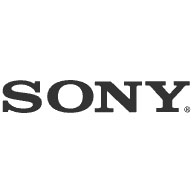At the end of the month, Sony CEO Howard Stringer intends to release his grand plan to help the struggling Japanese consumer electronics and media giant regain its past glory. The big question is whether the company – whose sales totaled $66.9 billion in 2004 – has the corporate will to make a comeback.
Sony at a glance suggests that Stringer – who headed up Sony Corp. of America before being named CEO on June 23 – has his work cut out for him. On July 28, the company reported its second consecutive quarterly net loss, a deficit of $66 million for the first quarter ending June 30, and substantially cut its profit outlook for the current fiscal year. The company lost $528 million for the fourth quarter ending March 31. Meanwhile, Sony faces numerous threats. Microsoft is releasing its Xbox game console in time for Christmas and a few months ahead of Sony’s latest PlayStation. Apple Computer’s iPod has made the Sony Walkman a relic. And rival Samsung, which had 2004 sales of $56 billion, is giving Sony a run for its money in consumer electronics, notably flat-panel televisions.
Stringer, at his introductory press conference in June, acknowledged that Sony “faces real challenges.” Fixing Sony’s electronics business was “his first and foremost priority,” he said, noting then his intention to produce a restructuring plan at the end of September. The main goal: forming a cohesive corporate culture and mission to meld divisions that create and distribute music, make movies and produce gadgets. “We have to become one highly focused organization and define competencies worldwide,” said Stringer. “The walls that impeded communications have to come down and we have to focus R&D on products that are most likely to yield rewards.”
Wharton experts say what Sony really needs is some clarity in mission and enough foresight to see the opportunities in digital entertainment. “It’s not like Sony is going out of business, but there are so many stories to tell about the company’s inability to grasp opportunities,” says Wharton marketing professor Peter Fader.
Indeed, Apple Computer’s hit iPod could just as easily have been the sPod, with the “s” standing for Sony, says Wharton operations and information management professor Eric Clemons. Sony had all the elements to create an iPod-like device, but couldn’t follow through, he notes. “There is no reason that Sony, or anyone else, could not have [done this]. I’m still surprised that Apple did.” It’s possible, Clemons adds, that Sony didn’t see the iPod threat because it was worried about protecting its Walkman line and sales of conventional CDs. The bottom line: Sony didn’t think of ways to destroy its current businesses to create new ones.
A Taste for Content
How Sony fell from its dominant perch is a tale of political infighting, a corporate structure that didn’t mesh disparate business units and repeated missed opportunities.
Wharton management professor Daniel Levinthal says Sony made two questionable strategic decisions in the late 1980s and early 1990s. The first came in 1988 when it bought CBS Records and then, three years later, renamed it Sony Music Entertainment. In 1989, Sony bought Columbia Pictures and renamed it Sony Pictures. However, those moves left the company with one fundamental question unanswered. “Do you really want content when you are an electronics manufacturer?” says Levinthal.
At least Sony wasn’t alone in its taste for content. In 1991, Matsushita Electrical Industrial Co., the company behind Panasonic, acquired MCA, now known as Universal Studios. Four years later, in June 1995, Matsushita sold it to The Seagram Company. “Matsushita quickly cut its losses and you could argue that Sony should have done the same,” Levinthal suggests. Sony, however, kept its content, which increasingly became a distraction to the company’s electronics business. “If Sony had stayed a stand-alone electronics company, it wouldn’t have made some of its more recent decisions,” he says.
While Sony had the entertainment content, the means to distribute music and movies, and the electronic devices to play audio and video, it had to manage conflict between the three categories internally and resist the impulse to be overly controlling. While other electronics makers stuck with industry standards for digital music, Sony tried to use its proprietary formats to distribute its content.
According to Tim Bajarin, president of Creative Strategies, a Campbell, Calif.-based consulting firm, Sony’s proprietary formats are the result of internal squabbling. “The content guys were adamant about how their movies and music were to be protected on Sony devices,” says Bajarin. “That clash created a difficult situation since Sony is an amalgam of the consumer electronics value chain.”
Another problem for Sony is that each division is independently operated, according to Bajarin. “These silos don’t talk to each other. Compare that to Apple. CEO Steve Jobs micromanages, crafts one vision and everybody is on board. Sony’s structure doesn’t allow that.” Stringer wouldn’t disagree, and made a point of saying at his introductory press conference that the silos would have to be broken down to create “Sony United.”
John Kao, CEO of Kao & Co., a San Francisco-based consulting firm, advises Stringer to spend most of his time crafting a vision for the company — figuring out what it wants to be for the next half century. “Sony’s number one challenge is to return to the startling clarity of vision” it once had, says Kao. “Its original goal was to become a global brand, innovate and succeed where U.S. companies failed …. It has to return to fundamentals, harness its resources and then sell (a new vision and products) to the marketplace.”
Once that happens, Sony’s operations will fall in line, Kao argues. For instance, if Sony views itself as a design firm, it is more likely to outsource manufacturing. If it sees itself as an engineering-based company, it will retain manufacturing and all the costs that go with it. “Right now I feel like Sony is trying to do everything.”
Music, Digital TV Get Short shrift
Perhaps the company’s biggest blunder came in its music device business, a segment of the market that Sony’s Walkman once dominated before losing to the iPod. In January, Fader met with Sony music executives as they discussed their iTunes killer, dubbed “Sony Connect.” The general idea was that Sony would sell its tunes online for use on its own devices.
Fader asked the executives to detail why Sony Connect would be better than what Apple had to offer. “Their answer was, ‘because we’re Sony,'” says Fader. “It’s like they didn’t realize the train had left the station.” In retrospect, Sony could have replicated Napster and linked its hardware with software and its music distribution business, says Fader, adding that the execution would not have had to be perfect because all the music services are flawed in some way. Now, it could be too late. “In digital music it would take something heroic to get them back on track.”
According to Clemons, Sony’s best move would be to extend an iPod-like device into new markets that will change the game. “I would praise the iPod, and then try to bury it with a successor. Until recently the iPod was really clunky for storing and viewing photos because they had to go through a computer first. Could an sPod do a really good job with pictures? Probably not, but it could do better than the old iPods. Could an sPod carry a library of compressed movies (to play long enough) to survive a flight” on an airline?
But before Sony can become a leader in digital music, it must resurrect its electronic business, especially the market for digital television, critics of the company say.
While the Sony Trinitron was the dominant television set in the 1990s, the company was late creating the digital TVs and new plasma sets that rule today, says Levinthal. The transition to digital requires a different manufacturing style that corresponds well with Samsung’s expertise in making computer displays. Sony’s specialty is design. As a result, Samsung, which also makes semiconductors and flat panel computer displays, was able to leverage its manufacturing expertise to make liquid crystal display (LCD) televisions. “Sony was a leader in TV, looking to extend its platform and protect its current business,” says Levinthal. “Samsung saw digital television as a new opportunity.”
Indeed, Sony blamed its first quarter woes on a decline in sales for traditional and plasma-based television sets. Citigroup analysts Kathleen Boyle and Yohei Kanazawa estimated in an Aug. 12 research report that Sony’s TV operations will lose $1.27 billion in the current fiscal year. Sony must also address how it can manufacture LCD TVs when it doesn’t own production facilities outright.
Going Back to Electronics Roots
One area of contention for Sony will be its media businesses whose focus is on creating movies and music. Those businesses perform well when they produce hits like the Spiderman franchise, but can get dragged down with such flops as Bewitched. Levinthal and Fader argue that Sony has two choices: Sell the content business and focus on consumer electronics, or take its wide range of assets and create the synergies it initially expected when it got into music publishing, movies and games.
Fader says the jury is still out on what will happen and whether Stringer, who hails from the content side of Sony, will be the right executive to shake things up. “I don’t put a lot of weight at the top,” says Fader. “In many ways, Stringer is a figure head. The people below him and two levels down are the ones who will make this work.”
Levinthal suggests that the content business should be sold. “My concern is whether Stringer can leverage content, rescue the consumer electronics side and orchestrate deals between the two,” he says. “I could see Sony setting itself up for more proprietary standards.” Meanwhile, he argues that Sony doesn’t have to look far to find out what’s possible without content as a distraction. It only has to look to its game unit, the division behind the PlayStation franchise, which carries the company. Sony doesn’t make the games for the PlayStation, but does foster an ecosystem for game developers. “The PlayStation doesn’t try to leverage Sony’s media properties and doesn’t need them to be effective.”
If given the reins of Sony, Levinthal says he would “be patient, find the right buyer for the content and unload it.”
Kao, however, disagrees. Sony’s media businesses are only a distraction if you think the company just does electronics, he says. The potential to mix content, software and hardware shouldn’t be dismissed. “I applaud Sony for trying to be vertically integrated. Sure, the execution hasn’t been perfect, but Sony’s assets give it the ability to be unique. And that could pay off over decades.”
Don’t Turn off Your Set Yet
Despite its recent turmoil, no one is ready to call it quits on Sony. After all, it has a vast collection of assets that few companies can replicate. If content, hardware and software can be combined on new devices, Sony could make a big comeback.
Bajarin says Sony’s future may lie in a new gadget from its gaming division, which is the company’s cash cow. The PlayStation Portable (PSP) is “an exceptional start” that could pave the way for Sony to regain lost ground in digital home entertainment, he suggests. “The future is the handheld entertainment device and there’s a lot of opportunity out there.” While the PSP, a sleek handheld that Sony can’t manufacture enough of, focuses on games, it can also play music and movies. With the PSP, Sony could, in theory, leapfrog over other devices by allowing consumers to play television shows and movies whenever they desired. In addition, the PSP could come in different flavors — one focused on games, for example, and another on video.
Meanwhile, Sony could still find synergies between its businesses, says Fader. “It’s not too late. The market remains wide open, and if it can bring content and technology together, Sony can become dominant again.”



